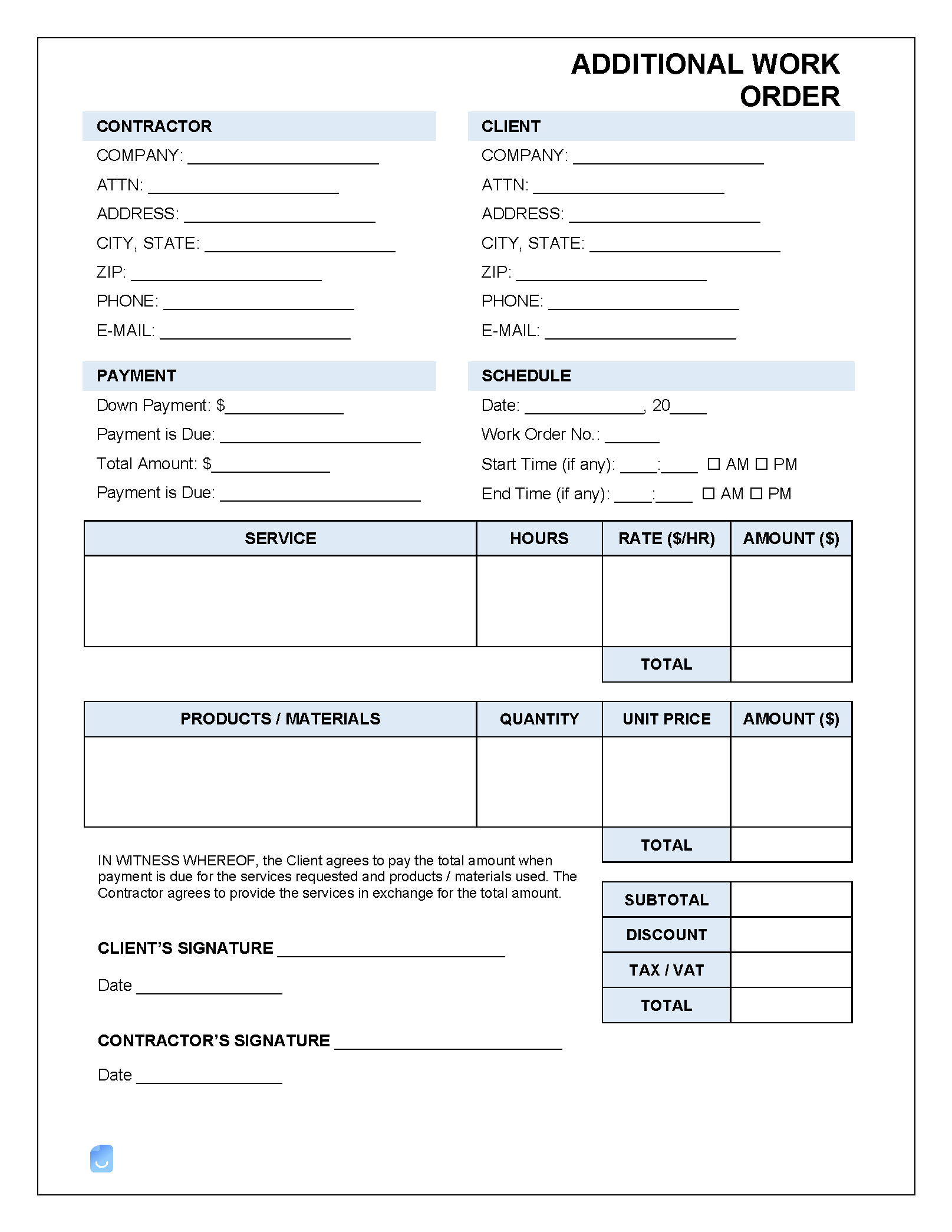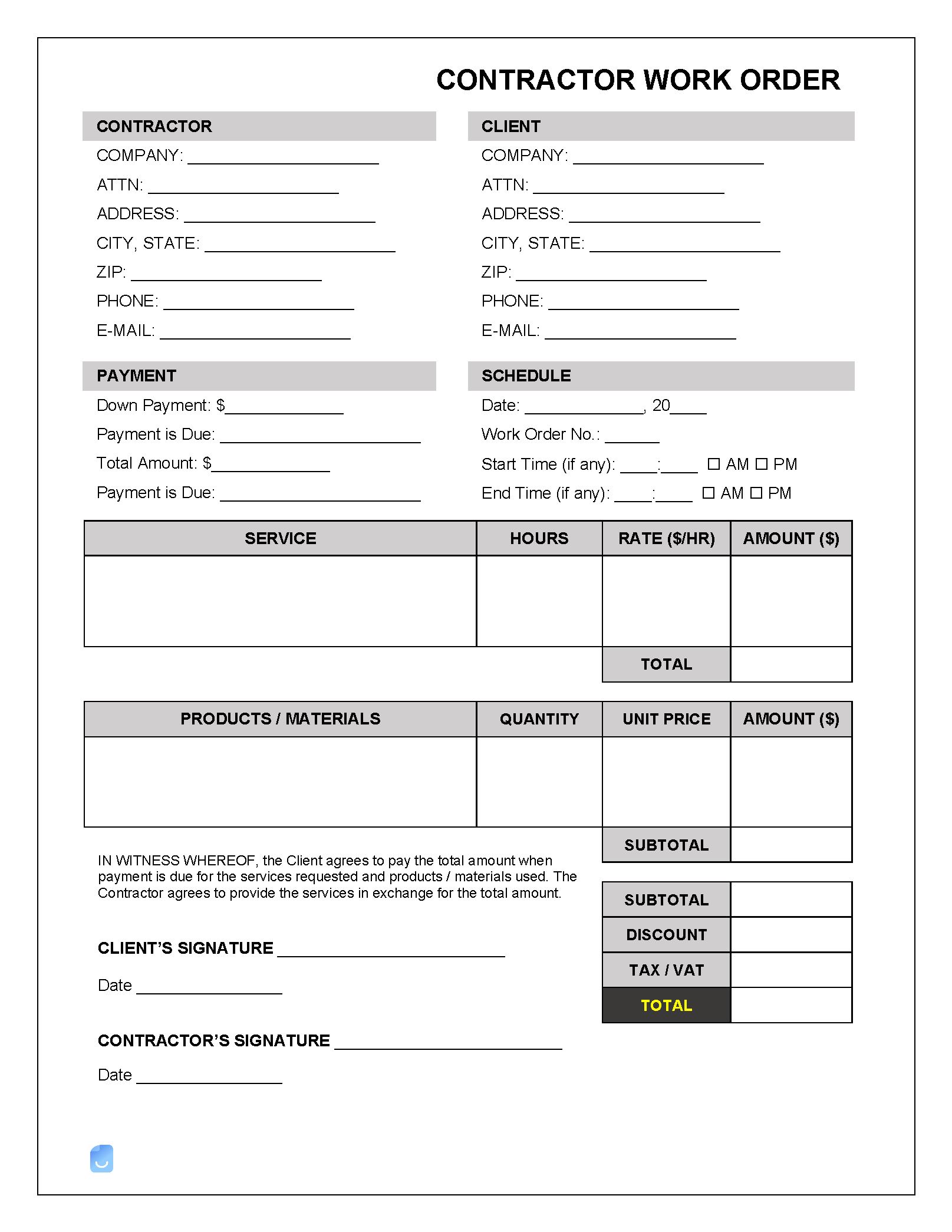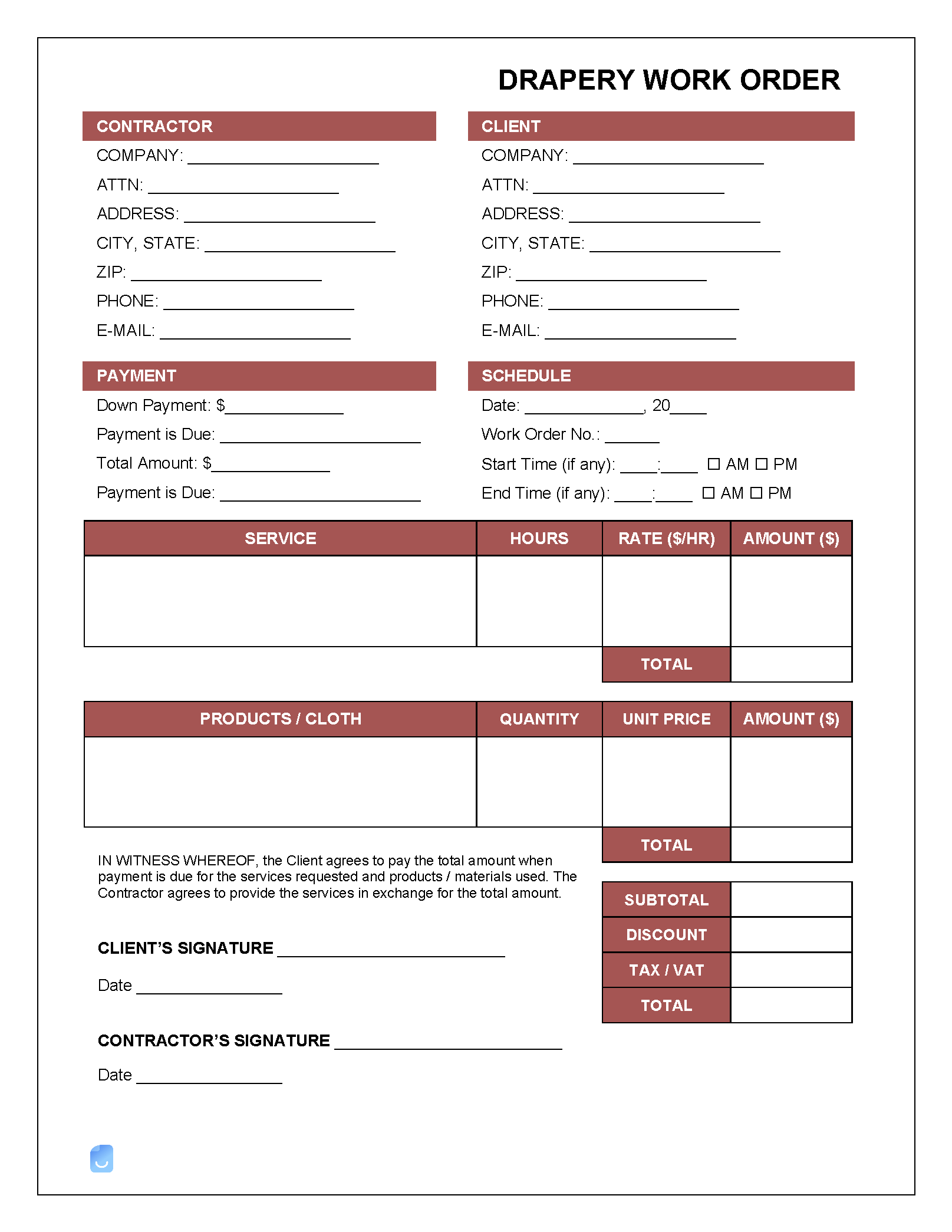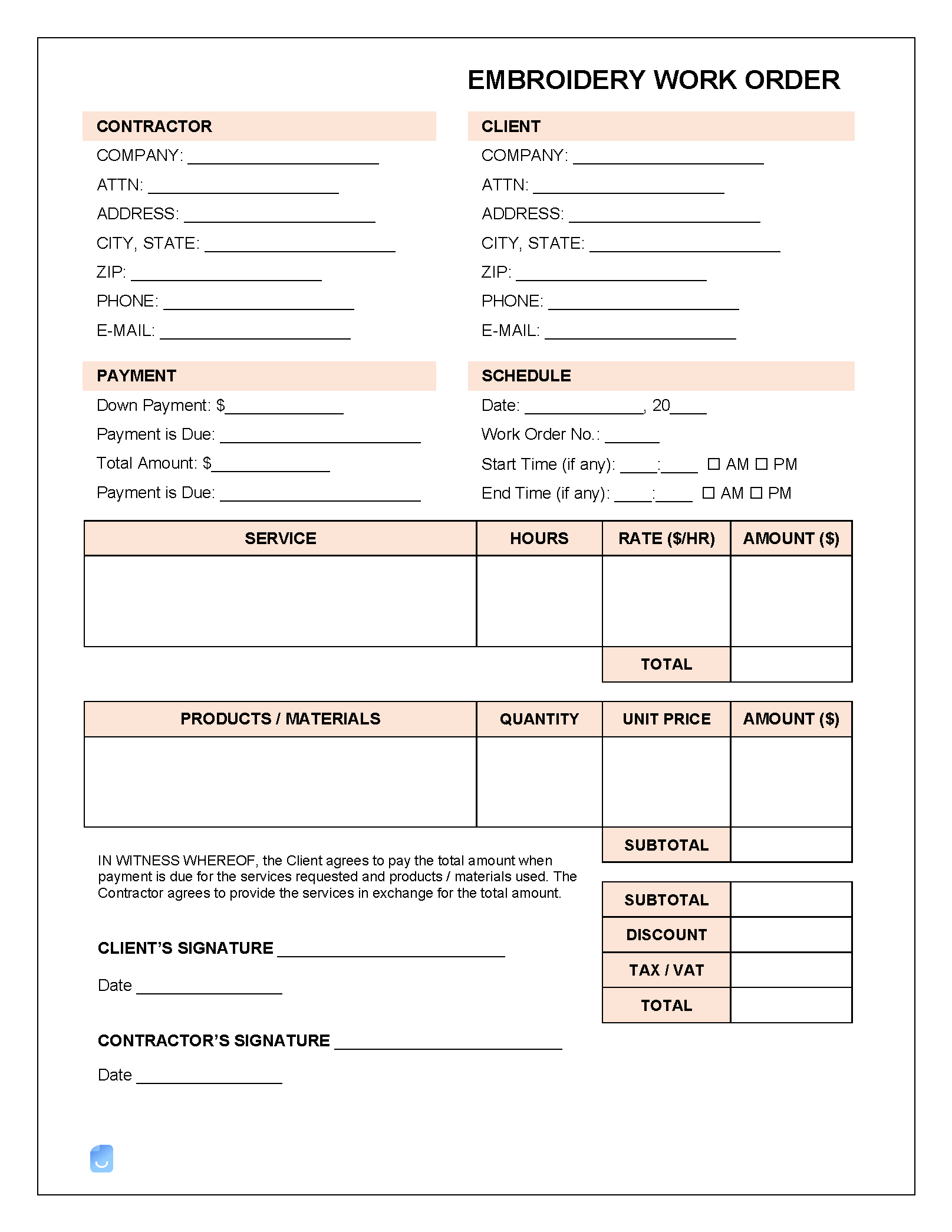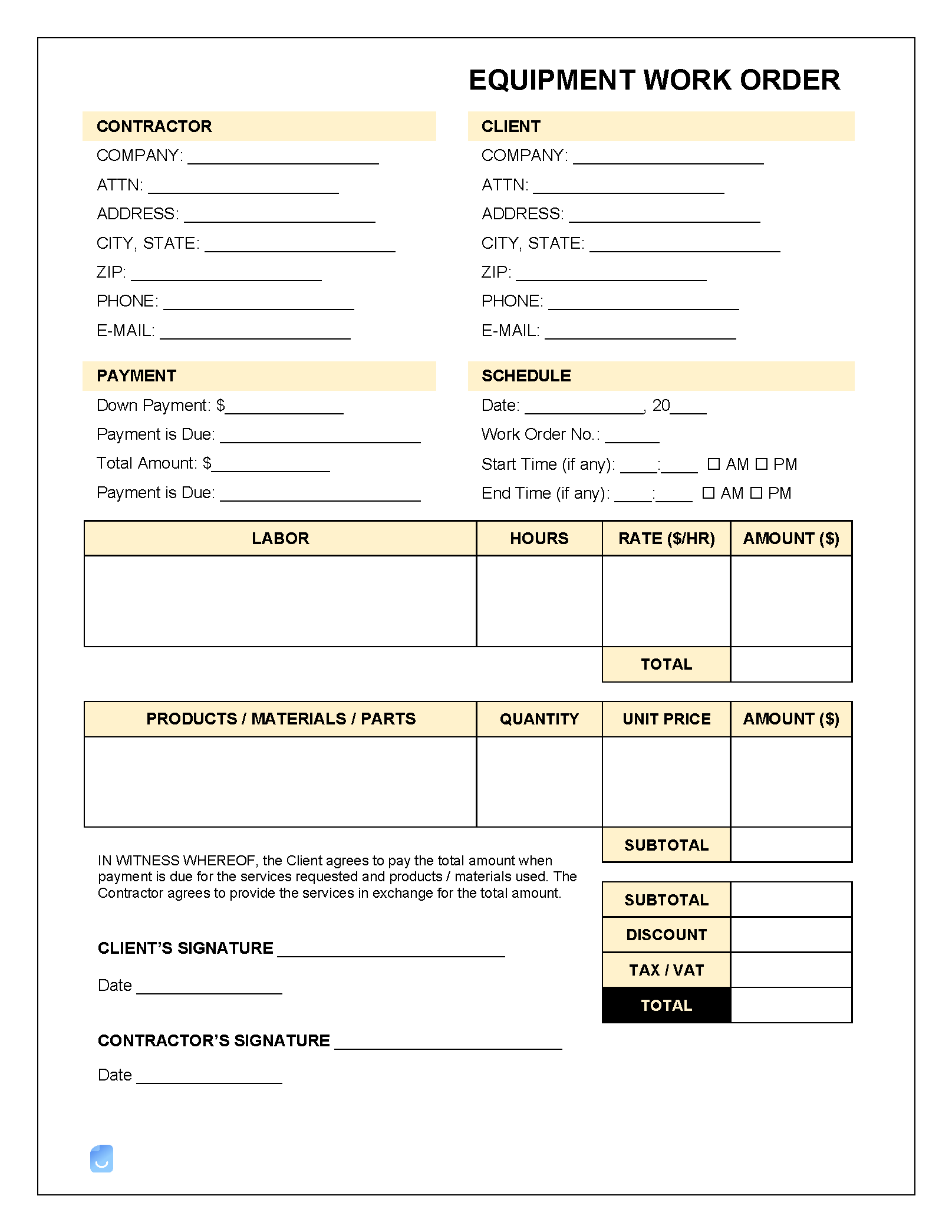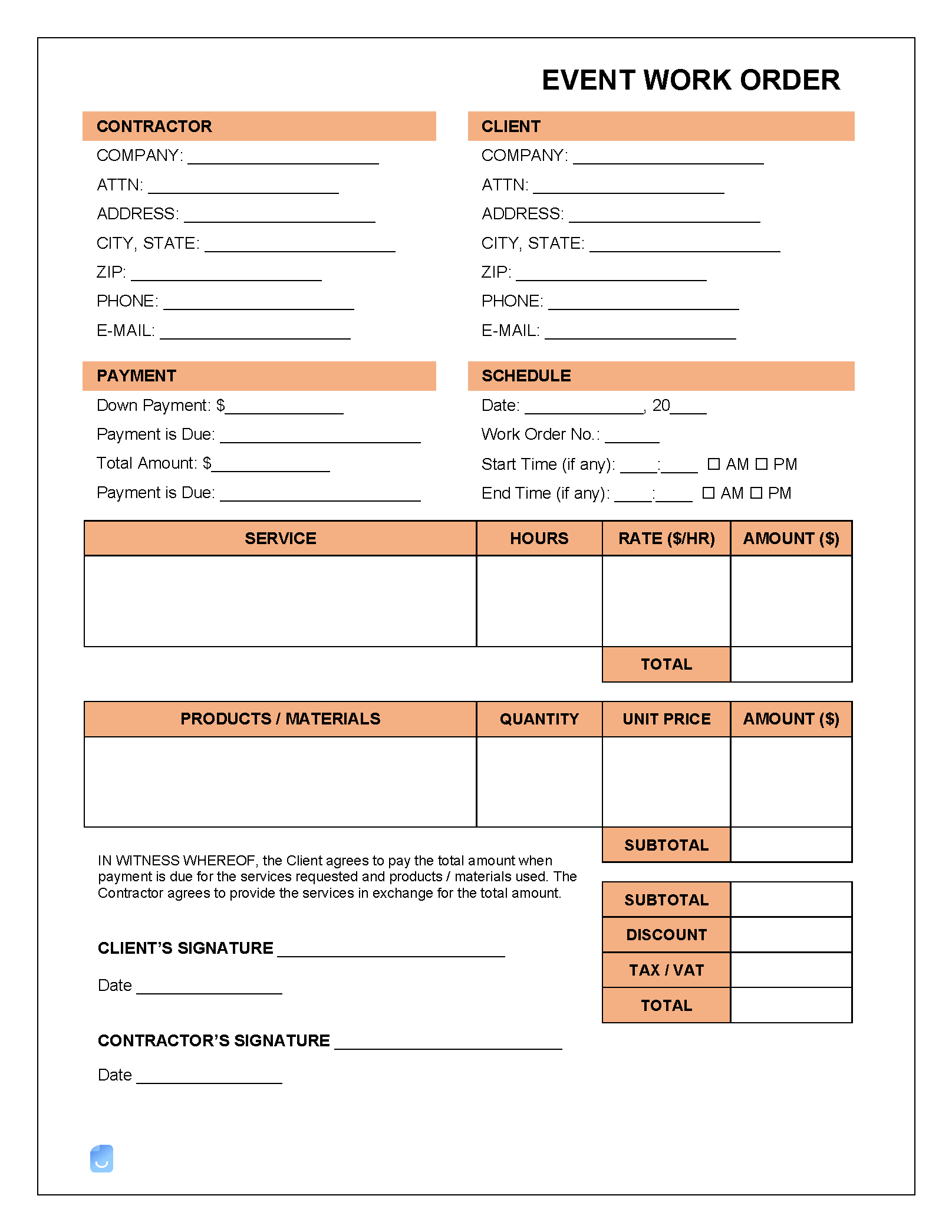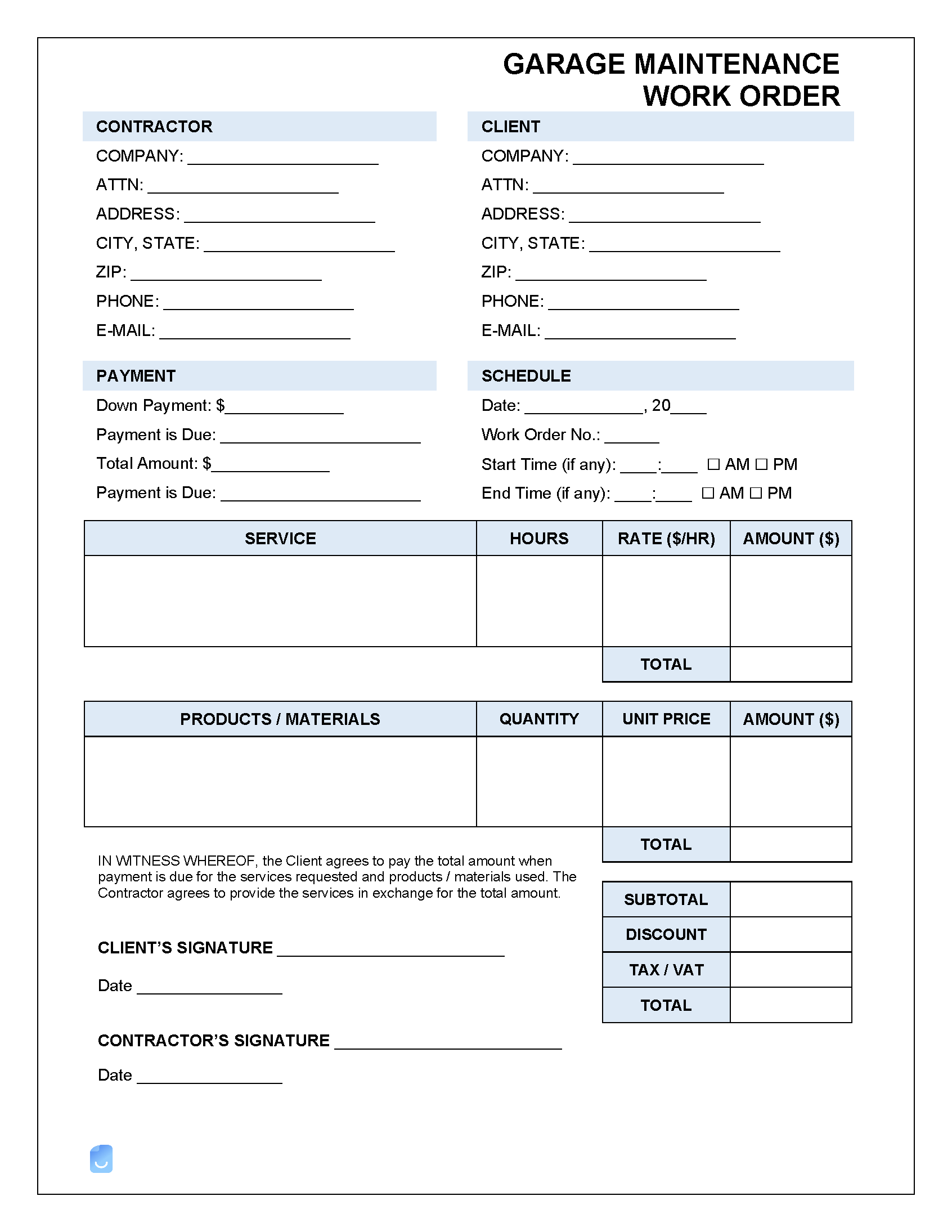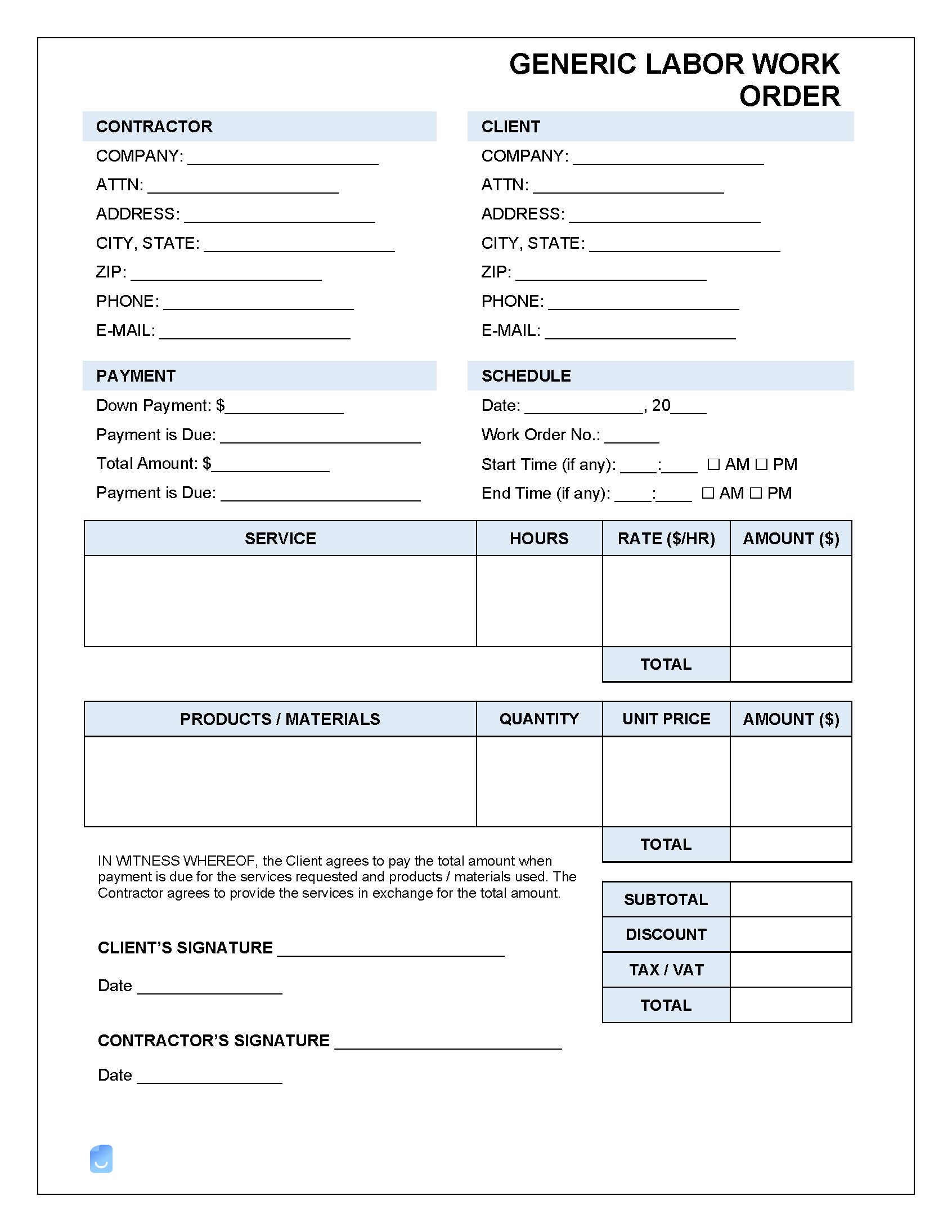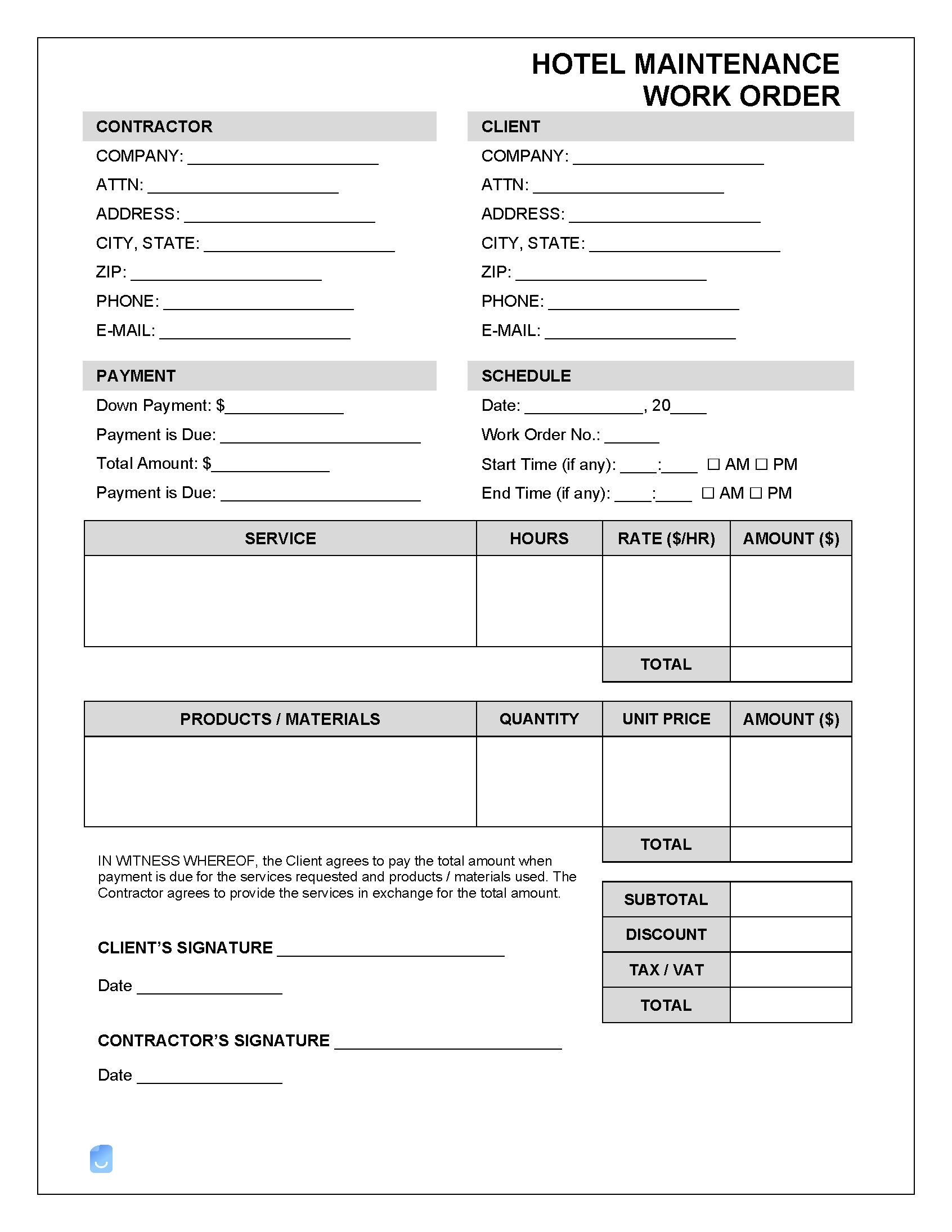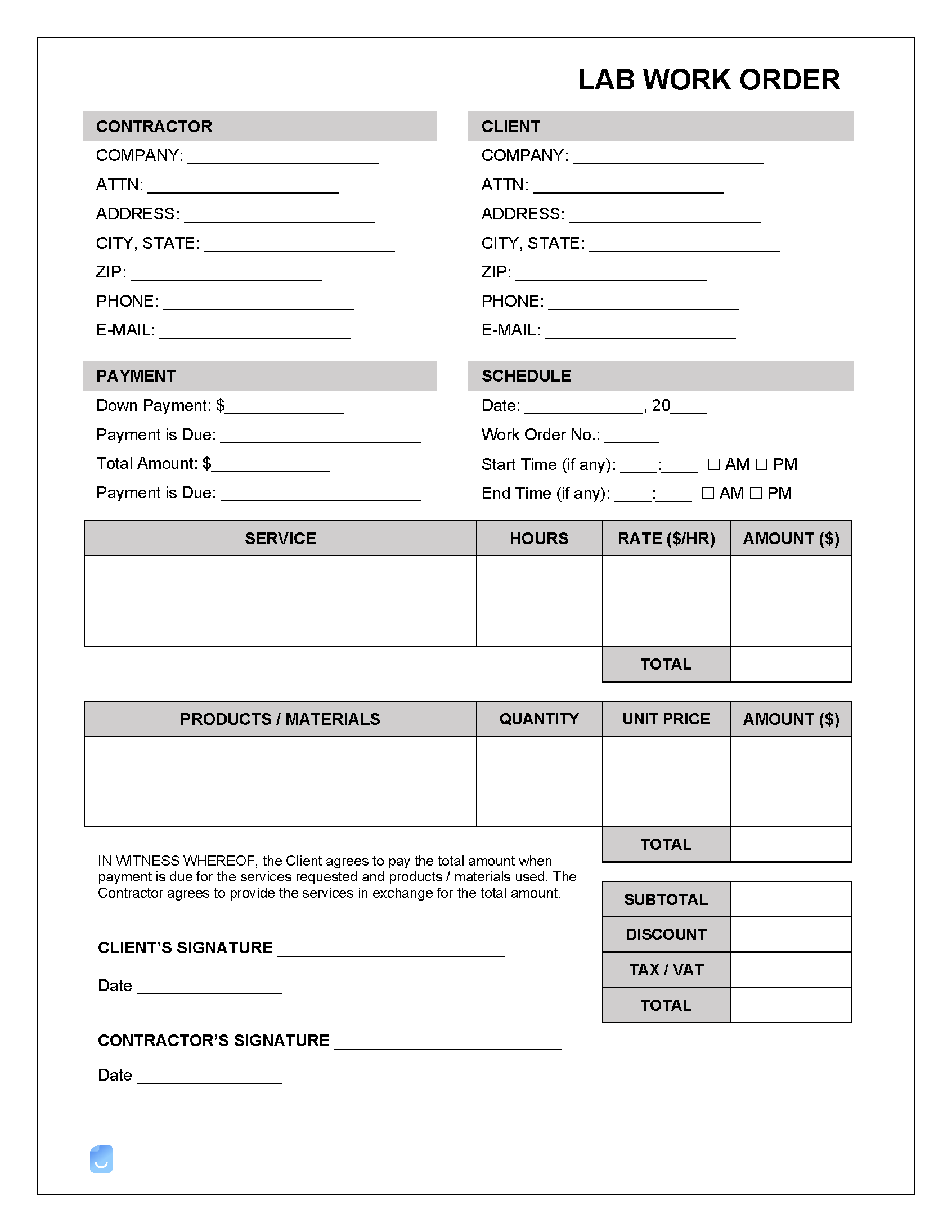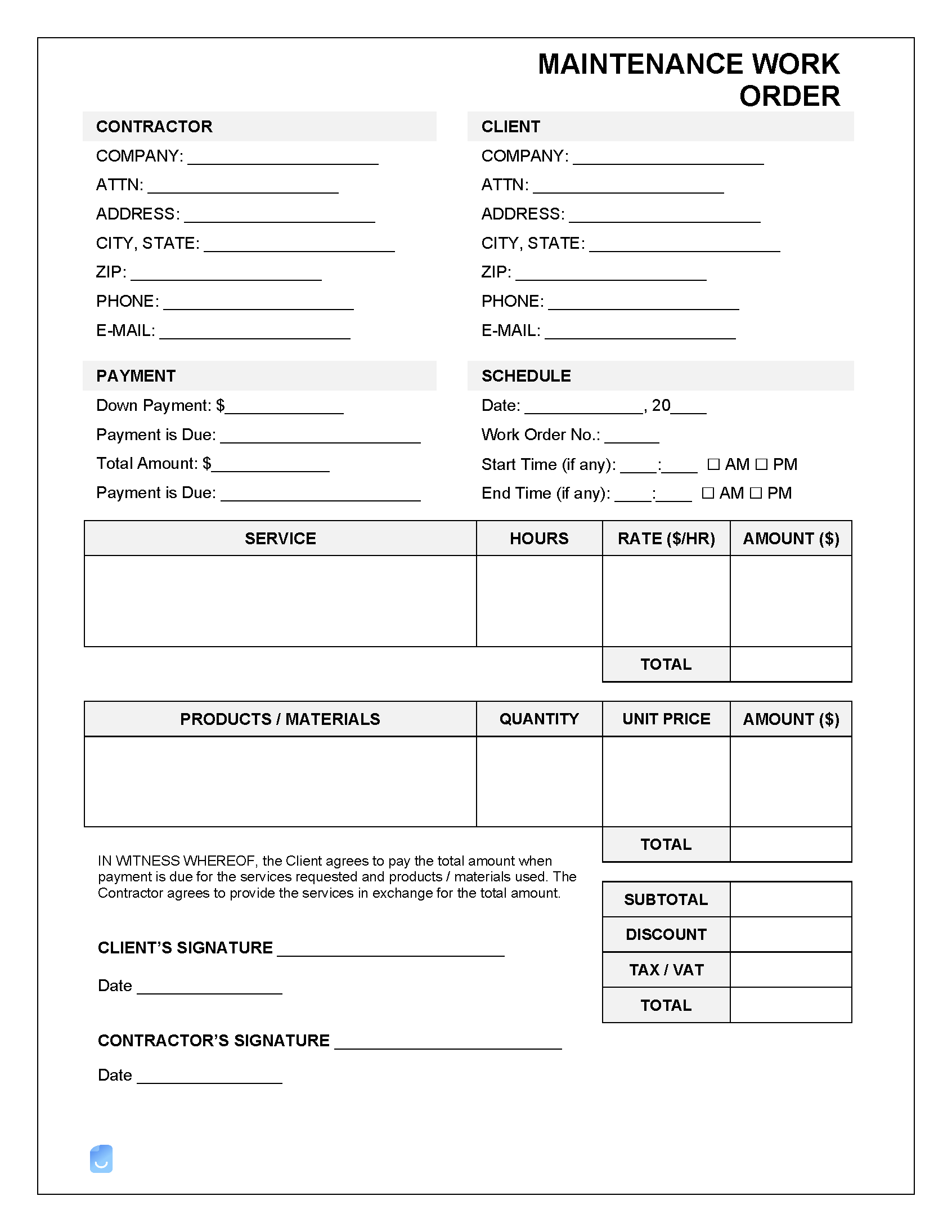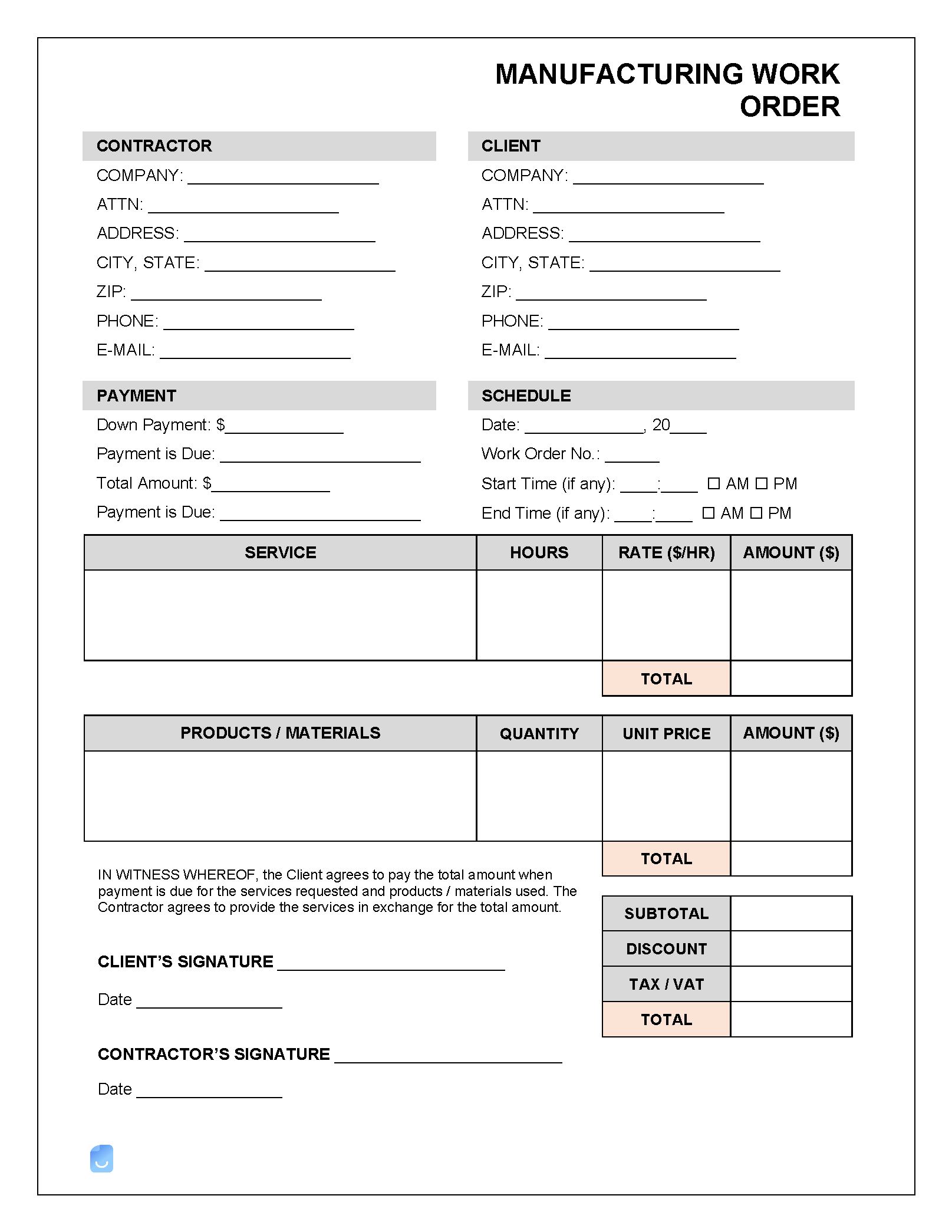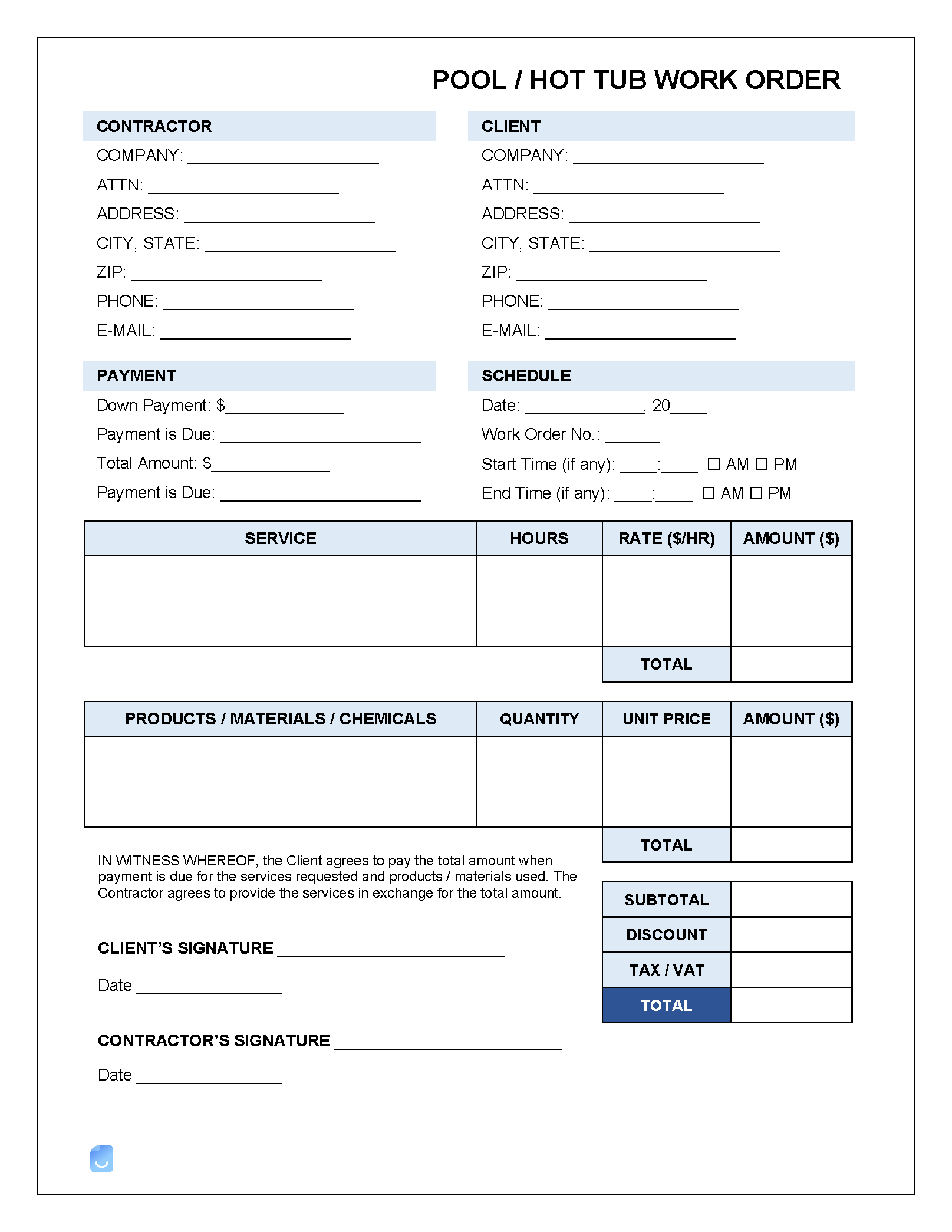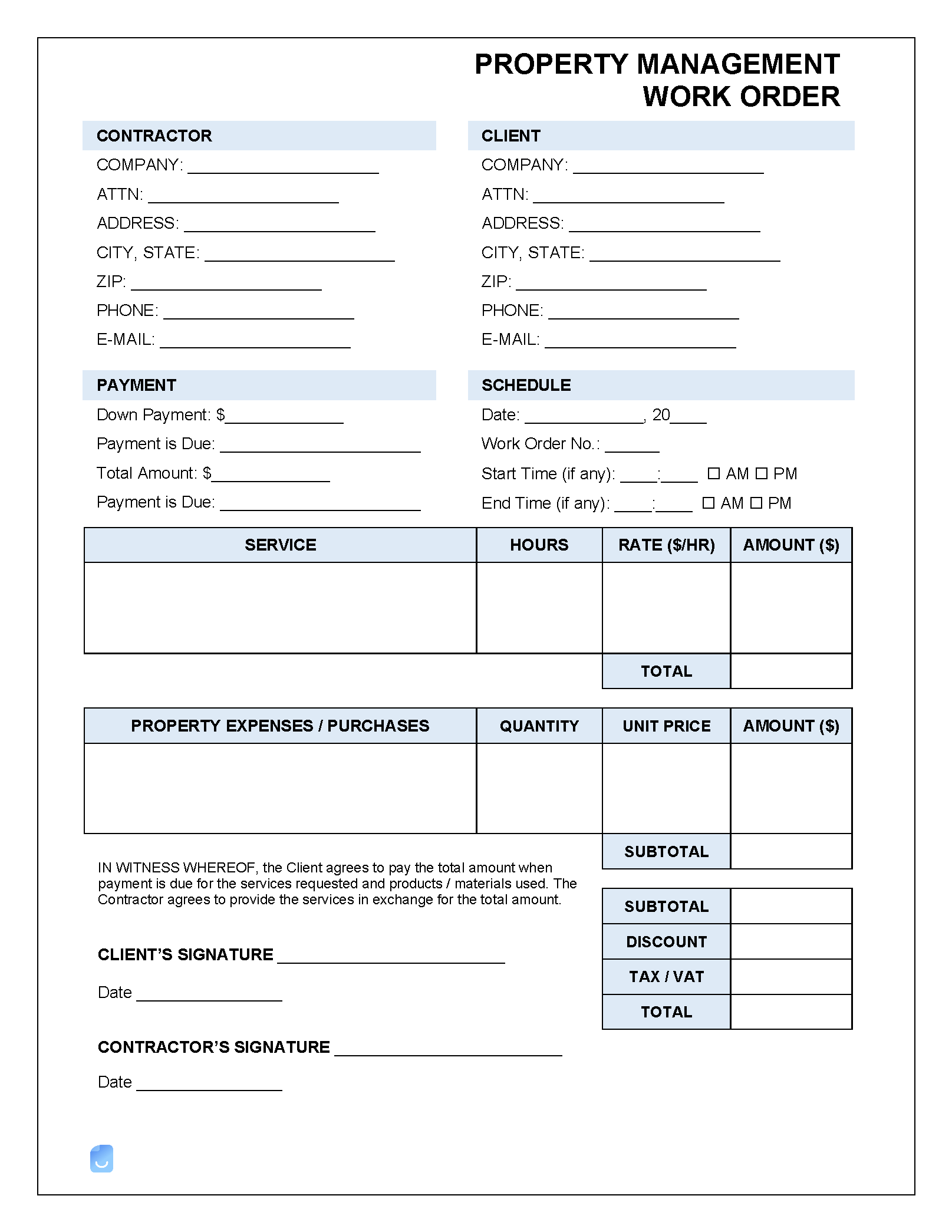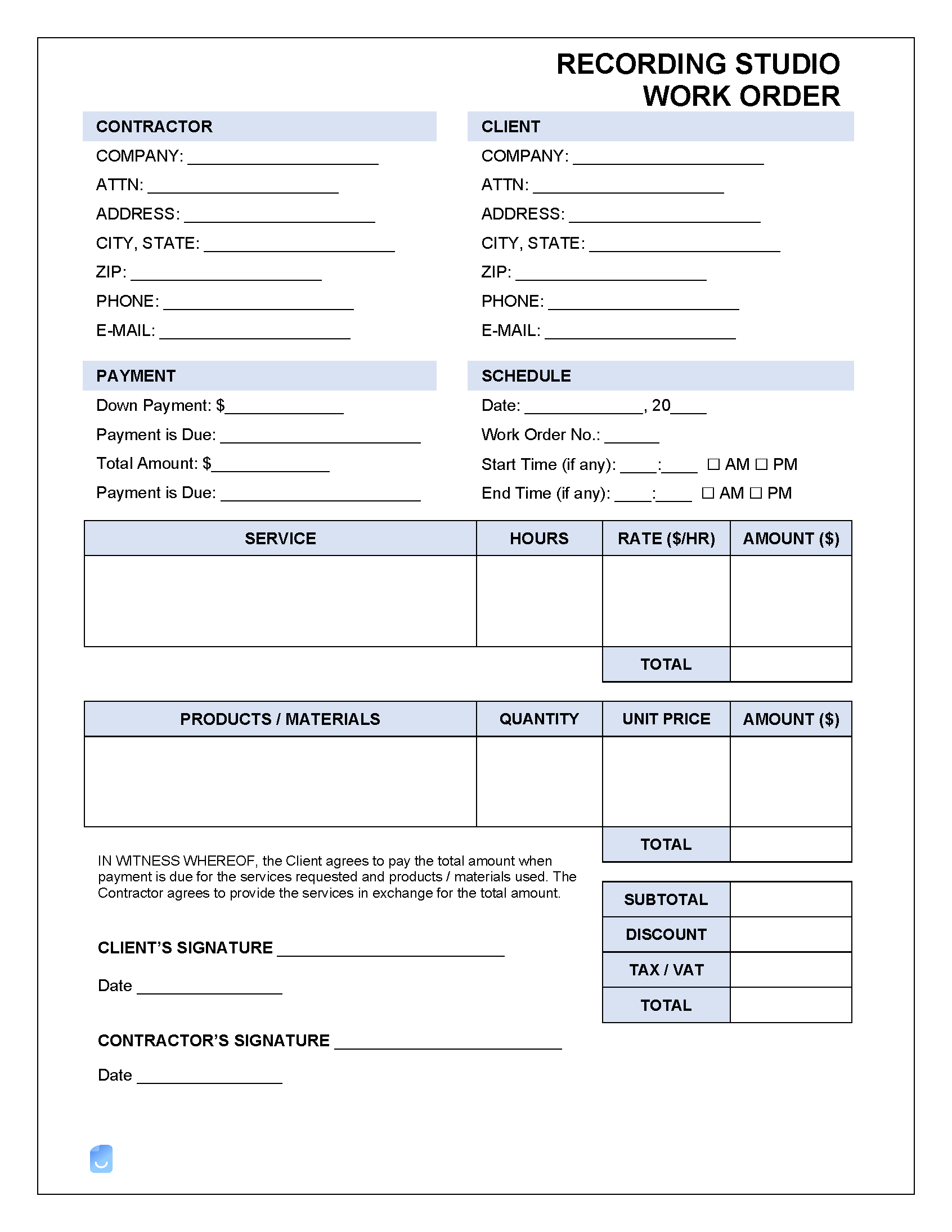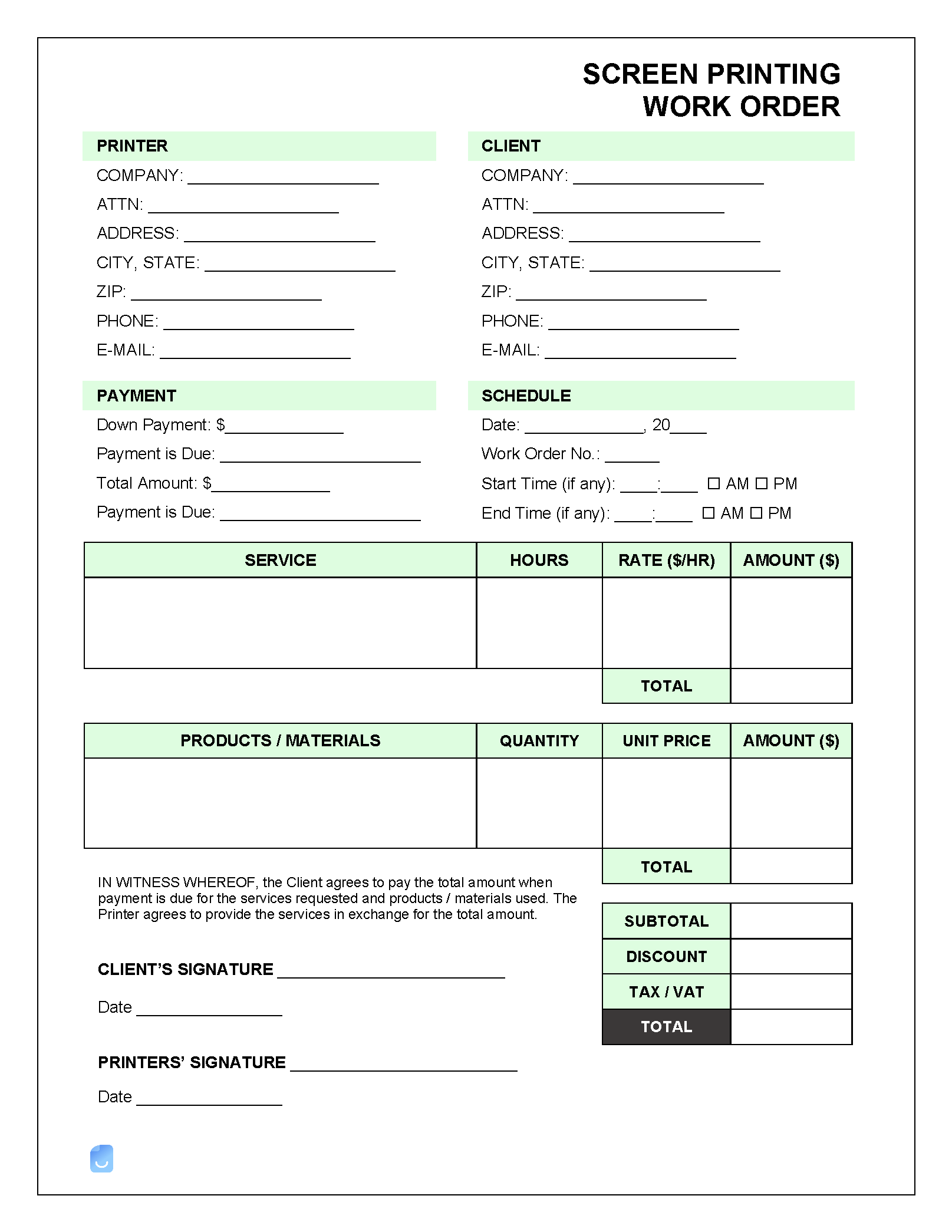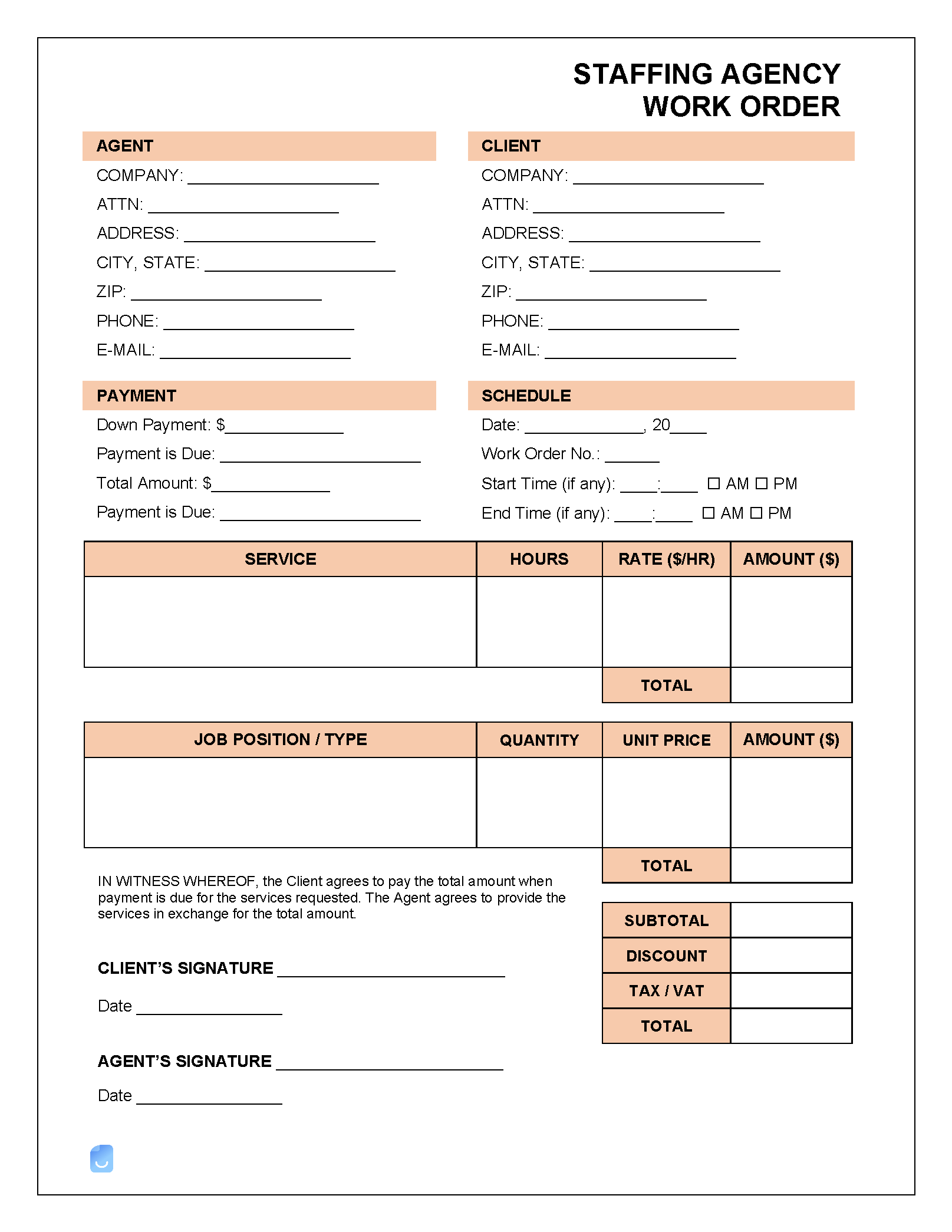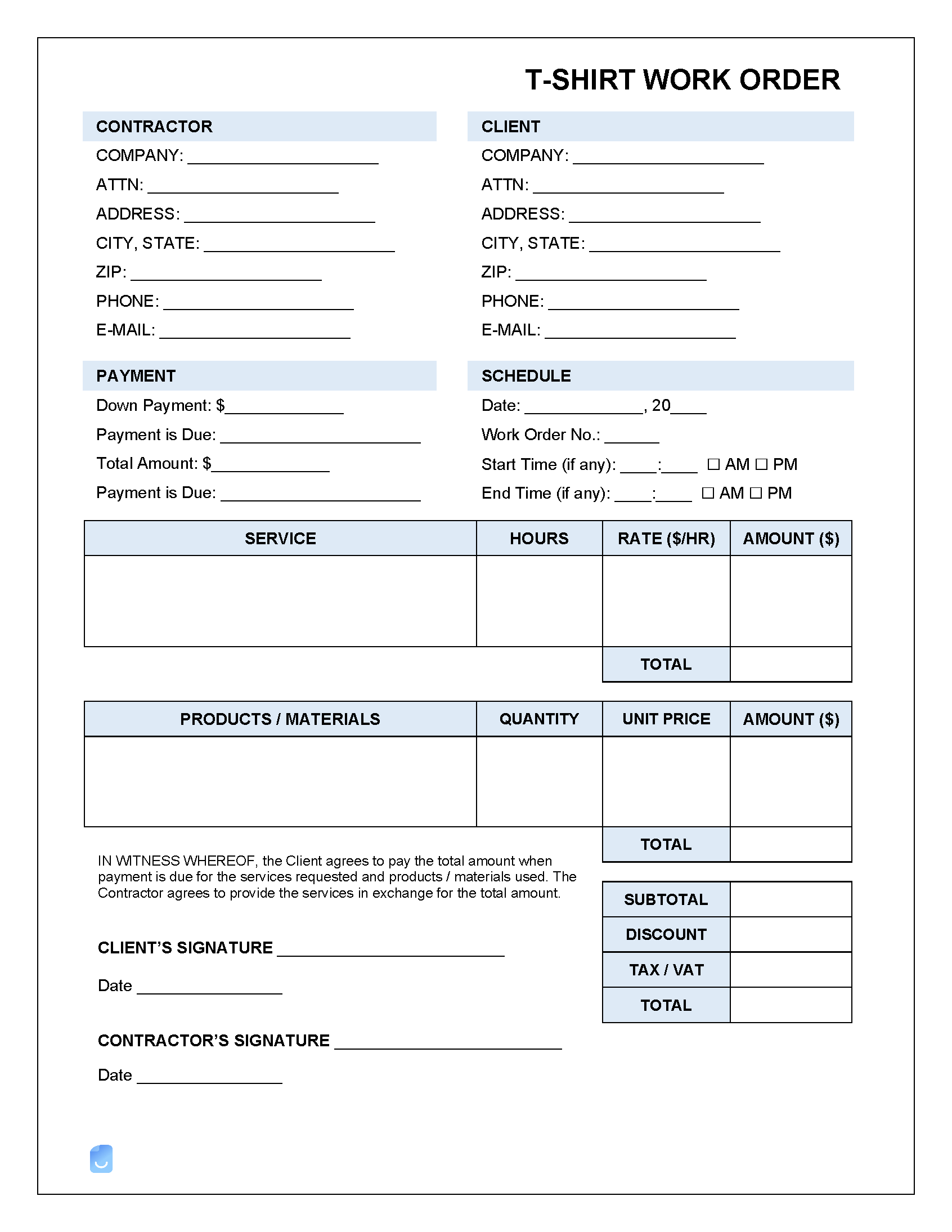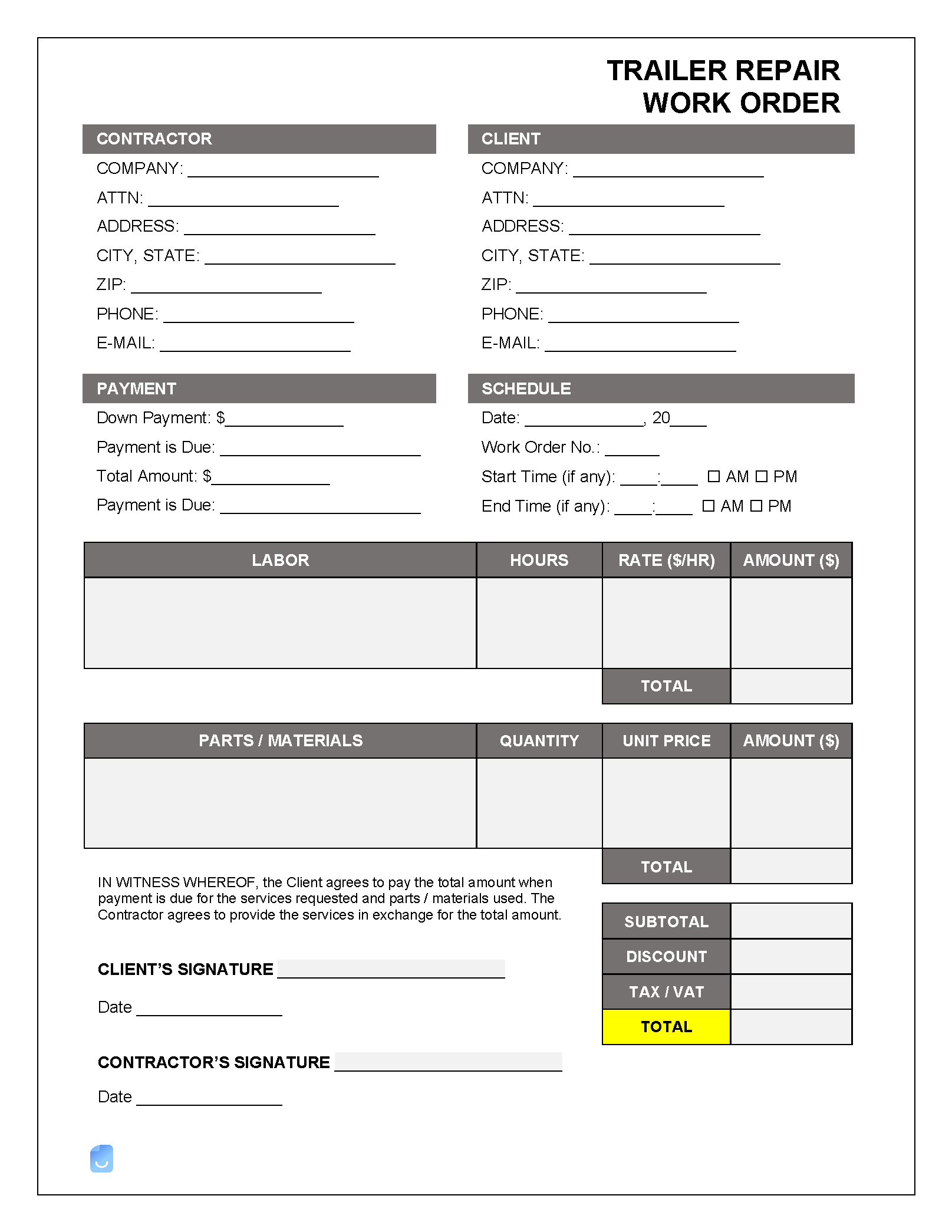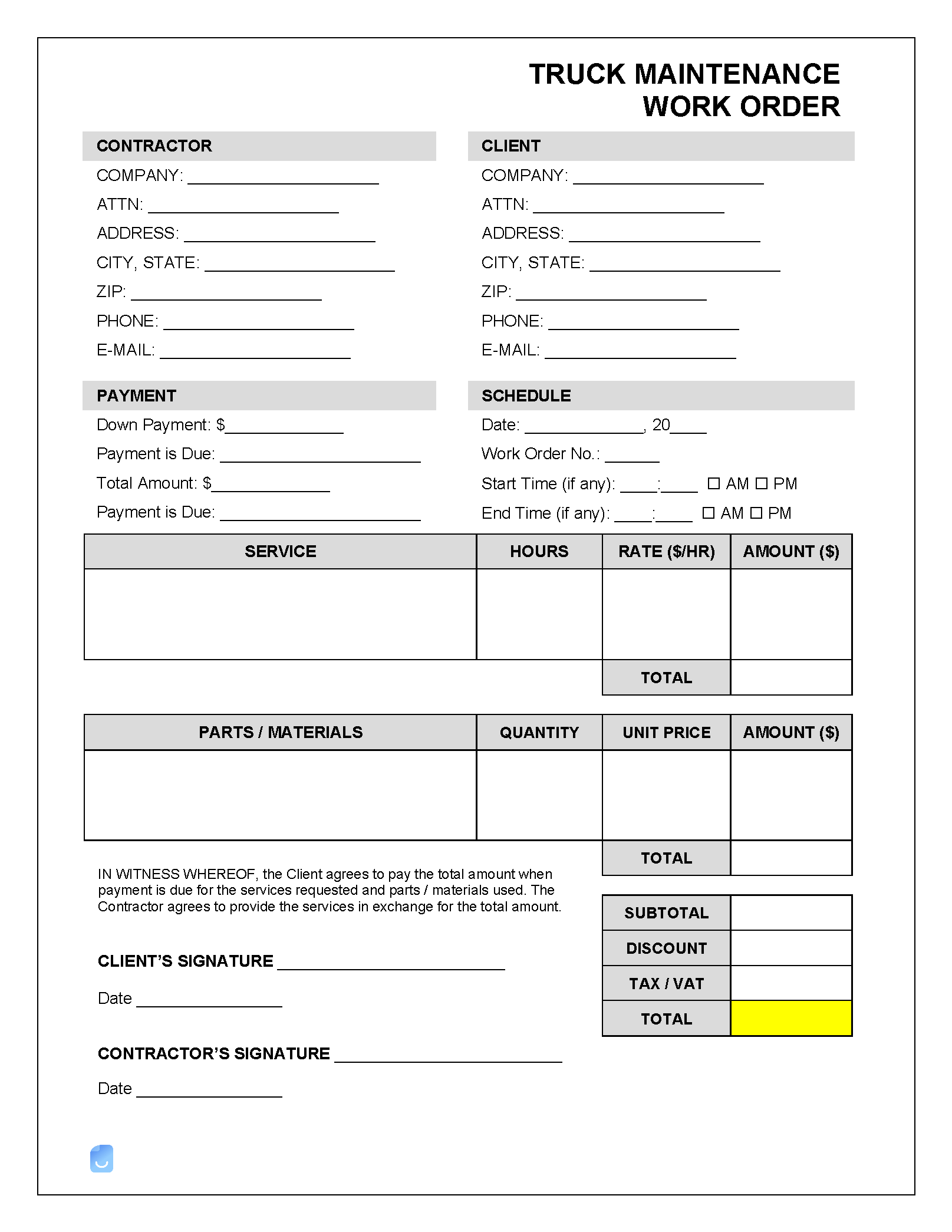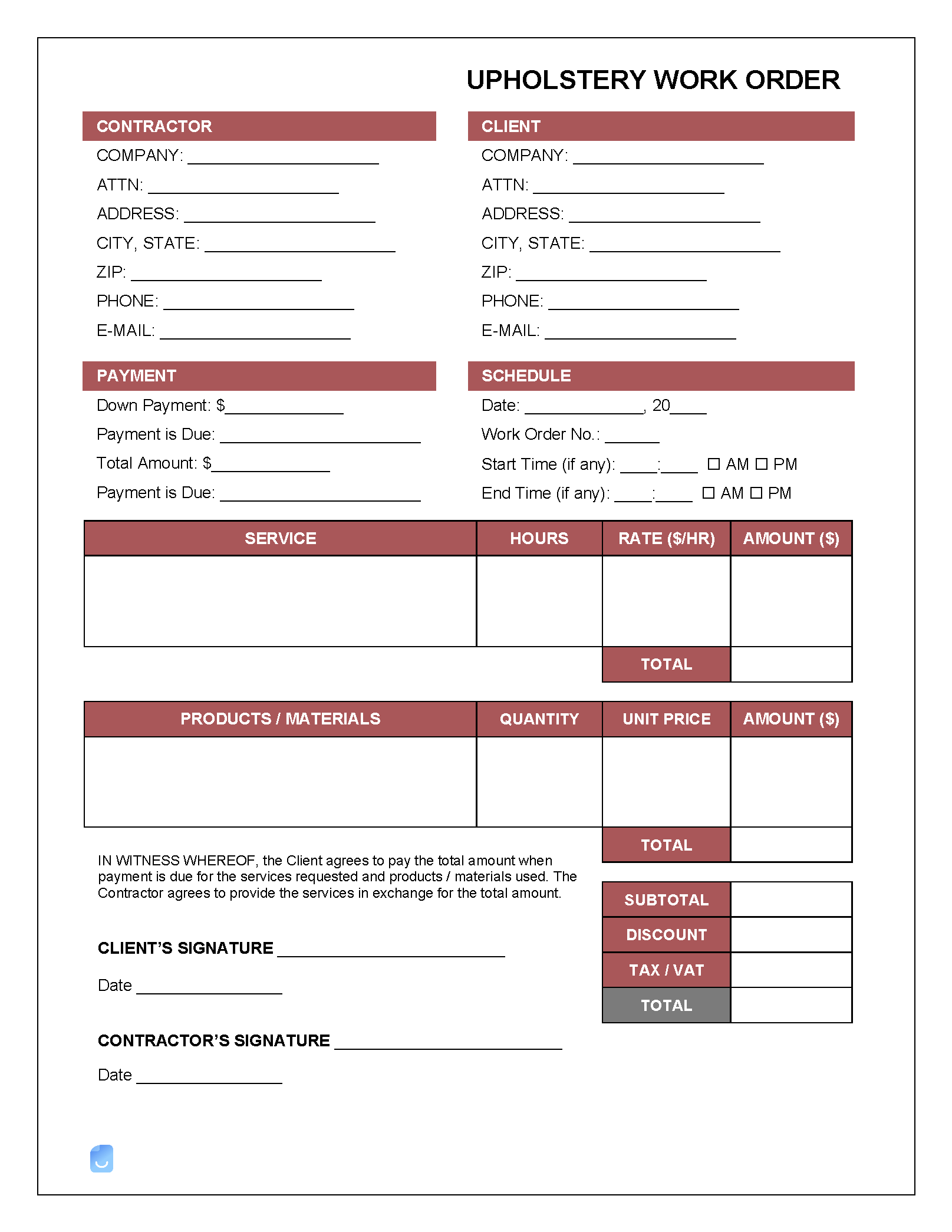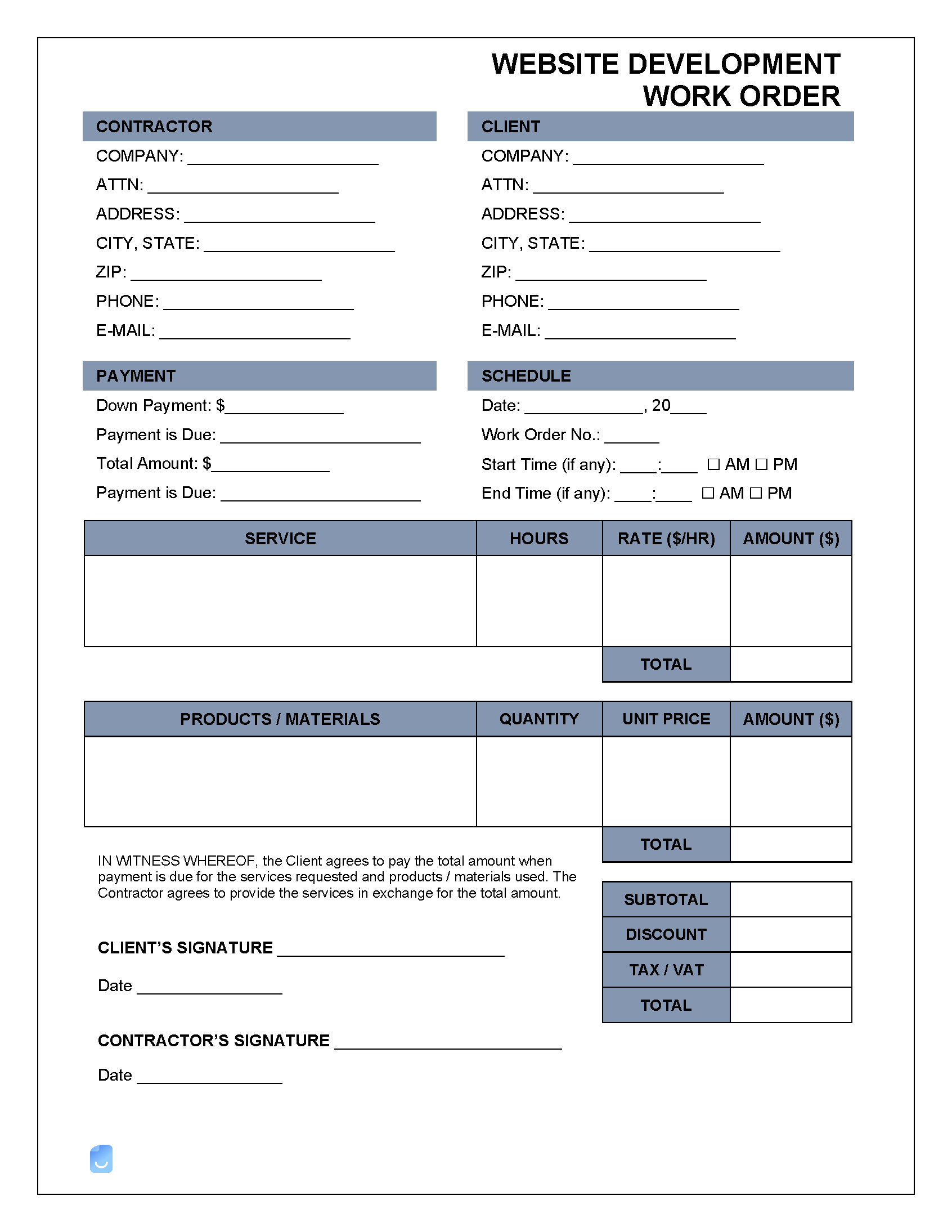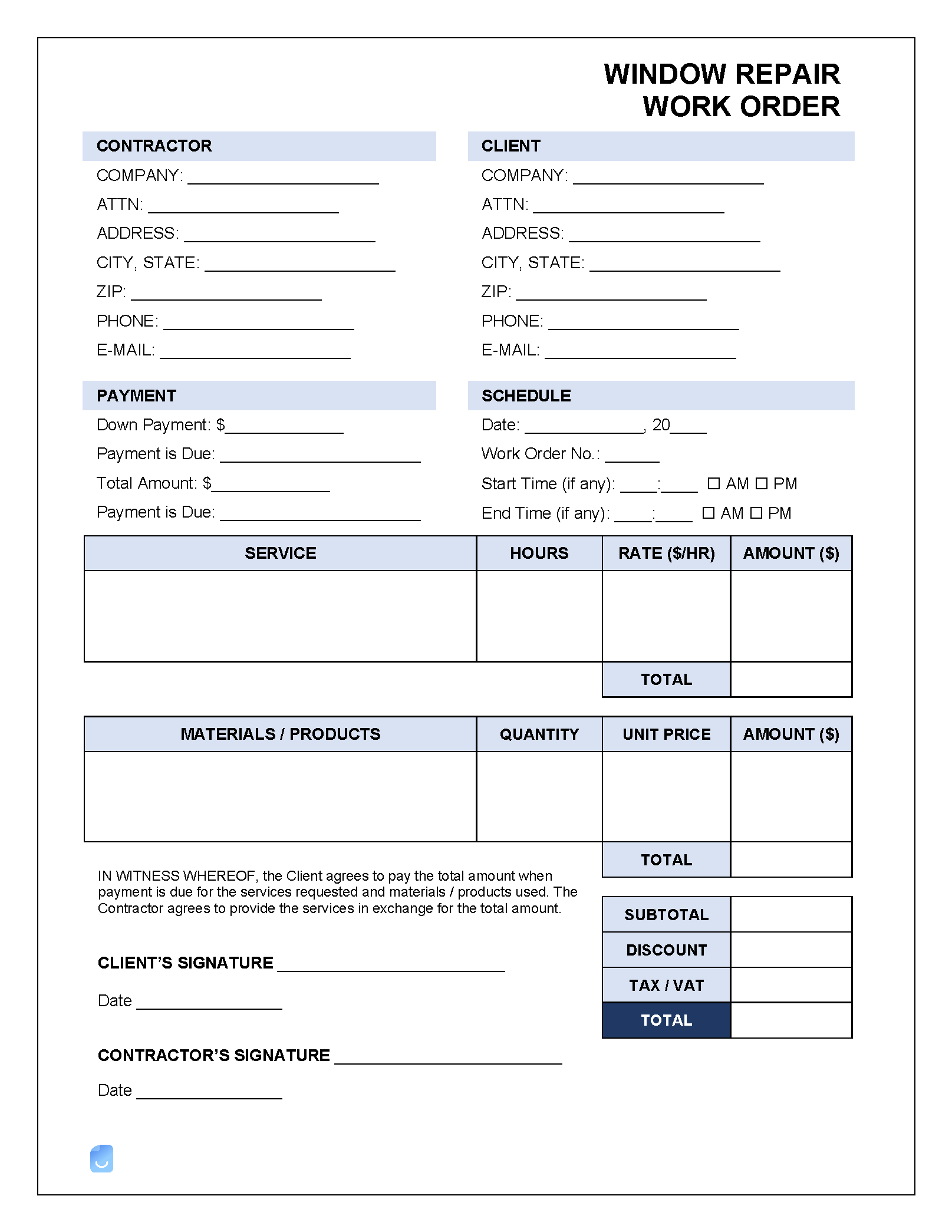By Type (30)
What is a Work Order?
A work order is used for legal, documentation, and processing purposes when an order is created. An order can be a job, a product, or even a service that is to be carried out by the party accepting the request. A work order is basically a one-page contract without all the difficult-to-read legal jargon. A work order should be as clear and precise as possible. If there is ever a dispute between a business and a customer, a work order can be used in the court of law to defend the business or to go after a customer for unpaid dues.
When a work order is completed, it can also be used to invoice the customer as all the information pertaining to the order and the amount due is already detailed. Once finalized, the work order should be recorded in the event a customer makes a claim in the future. Work orders are most often used in the following situations:
- Assigning a task with detailed instructions for completing a project
- Taking an order from a client when needing a signature
- Making a sudden change to an existing order/job
How to Make a Work Order
A work order can be made in any type of text editor such as Microsoft Word, Microsoft Excel, or by using online resources such as Google Docs and Google Sheets. The process of creating and submitting a work order is conducted in the following steps:
Step 1 – Client Makes a Request
The first step is when a client contacts a business or service provider to get an estimate for services through a work order. The client will make their request as detailed as possible in an effort to get an accurate estimate amount.
Step 2 – Service Provider Makes the Work Order
The service provider will make a detailed proforma showing the costs for materials, labor, and any other expenses in a line-by-line format. When the final amount has been calculated and reviewed, it should be submitted to the client.
Step 3 – Get the Client’s Approval
After submitting the work order to the client, they will need to review it. Only after approval may the service provider begin the work. In most cases, the client will be required to sign the work order and pay a deposit on the future work to be provided.
Step 4 – Complete the Job and Get Paid
The service provider is now permitted to complete the job and deliver the finished product to the client. After the client approves the work provided, an invoice should be administered by the service provider and due immediately. Late Payment – If the client is more than thirty (30) days late, fees may accrue, and if not paid after ninety (90) days is recommended to send the outstanding balance to a collections agency. Mechanic’s Lien – If the service provider worked for a landlord and payment was not made, the provider may be able to obtain a mechanic’s lien. A mechanic’s lien allows the service provider to be paid if the property sells and notifies the mortgagee that a claim has been made on the property.

